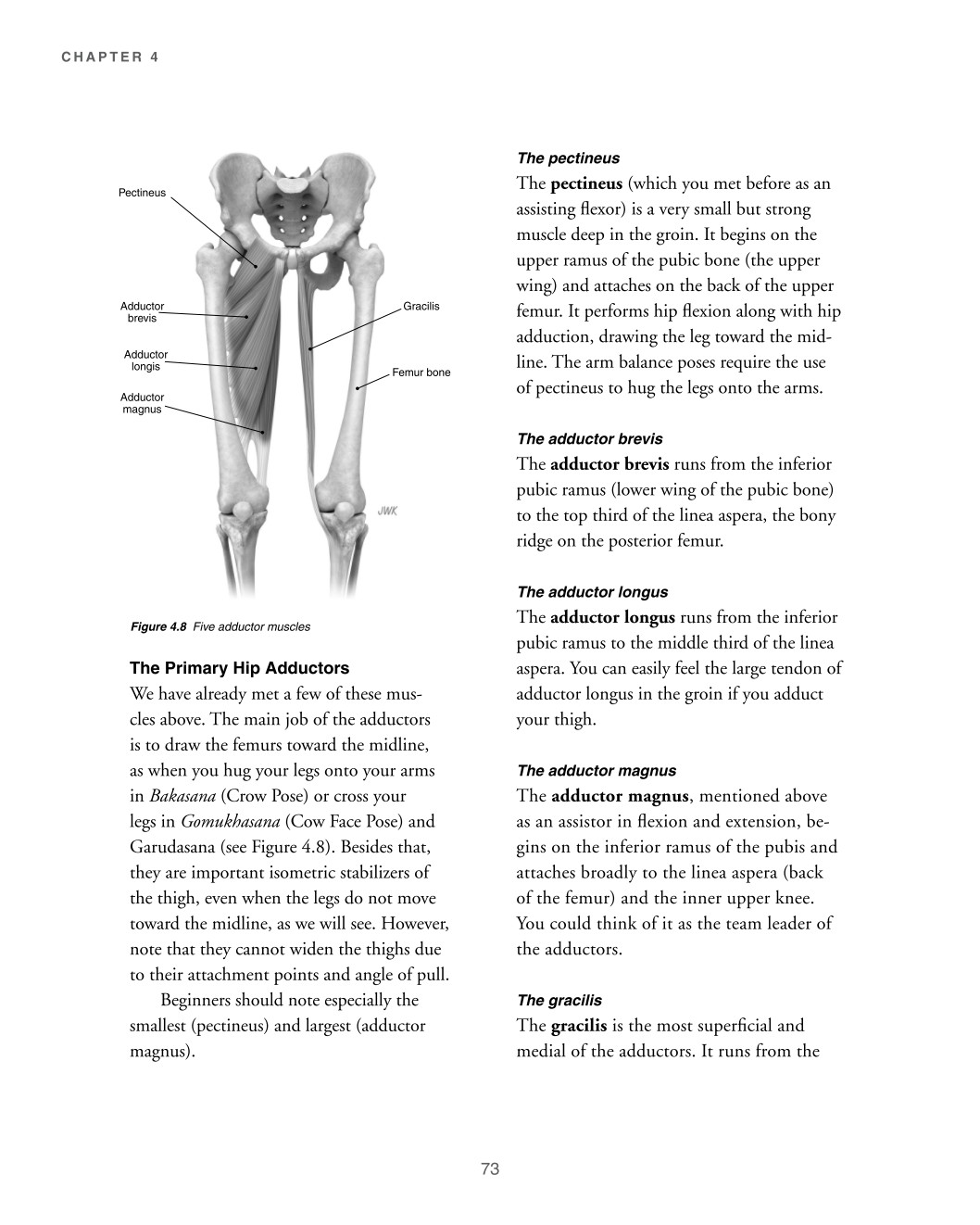

CHAPTER 4
Pectineus Adductor brevis Adductor longis Adductor magnus Gracilis Femur bone The pectineus The pectineus (which you met before as an assisting flexor) is a very small but strong muscle deep in the groin. It begins on the upper ramus of the pubic bone (the upper wing) and attaches on the back of the upper femur. It performs hip flexion along with hip adduction, drawing the leg toward the mid- line. The arm balance poses require the use of pectineus to hug the legs onto the arms. The adductor brevis The adductor brevis runs from the inferior pubic ramus (lower wing of the pubic bone) to the top third of the linea aspera, the bony ridge on the posterior femur. Figure 4.8 Five adductor muscles The Primary Hip Adductors We have already met a few of these mus- cles above. The main job of the adductors is to draw the femurs toward the midline, as when you hug your legs onto your arms in Bakasana (Crow Pose) or cross your legs in Gomukhasana (Cow Face Pose) and Garudasana (see Figure 4.8). Besides that, they are important isometric stabilizers of the thigh, even when the legs do not move toward the midline, as we will see. However, note that they cannot widen the thighs due to their attachment points and angle of pull. Beginners should note especially the smallest (pectineus) and largest (adductor magnus). The adductor longus The adductor longus runs from the inferior pubic ramus to the middle third of the linea aspera. You can easily feel the large tendon of adductor longus in the groin if you adduct your thigh. The adductor magnus The adductor magnus, mentioned above as an assistor in flexion and extension, be- gins on the inferior ramus of the pubis and attaches broadly to the linea aspera (back of the femur) and the inner upper knee. You could think of it as the team leader of the adductors. The gracilis The gracilis is the most superficial and medial of the adductors. It runs from the
73